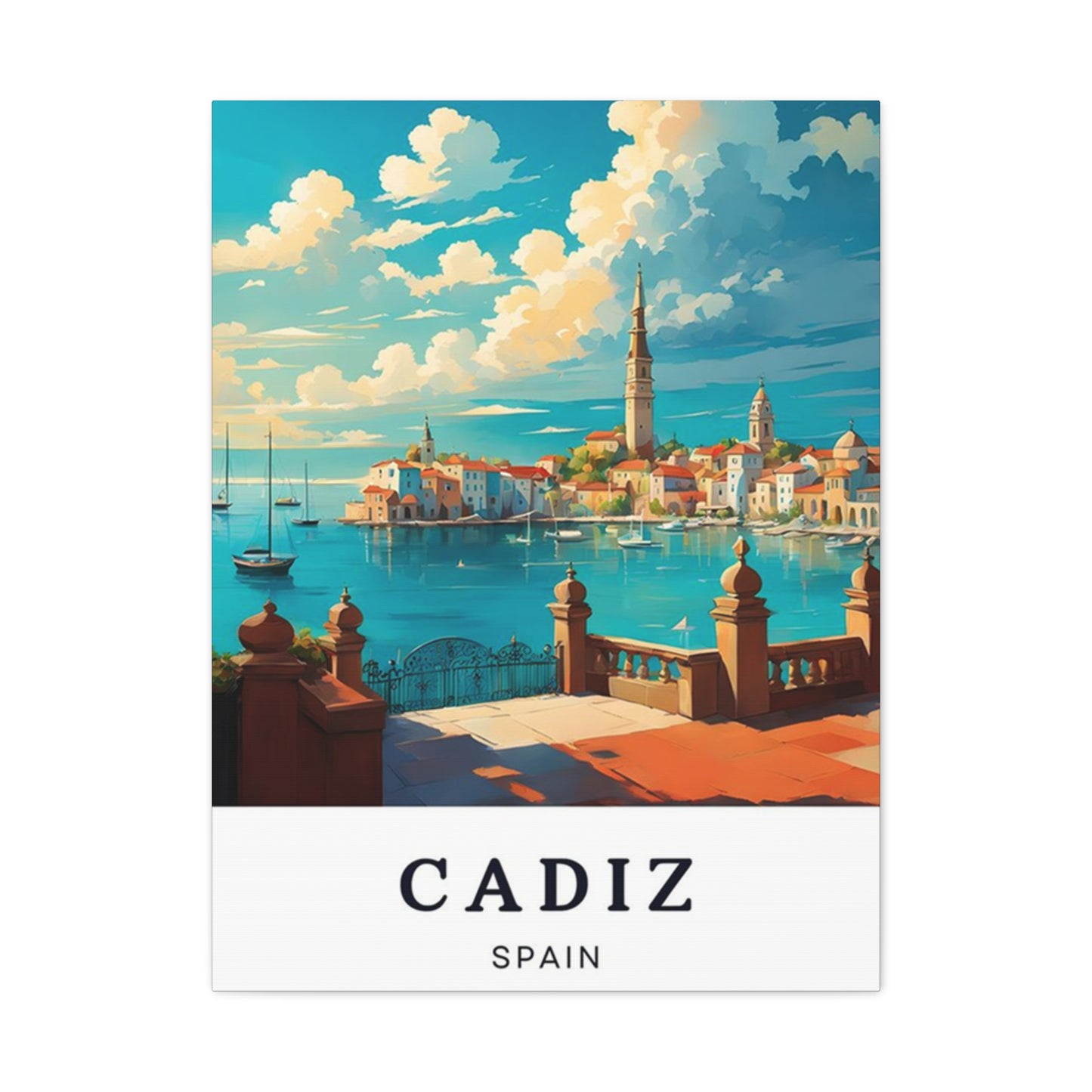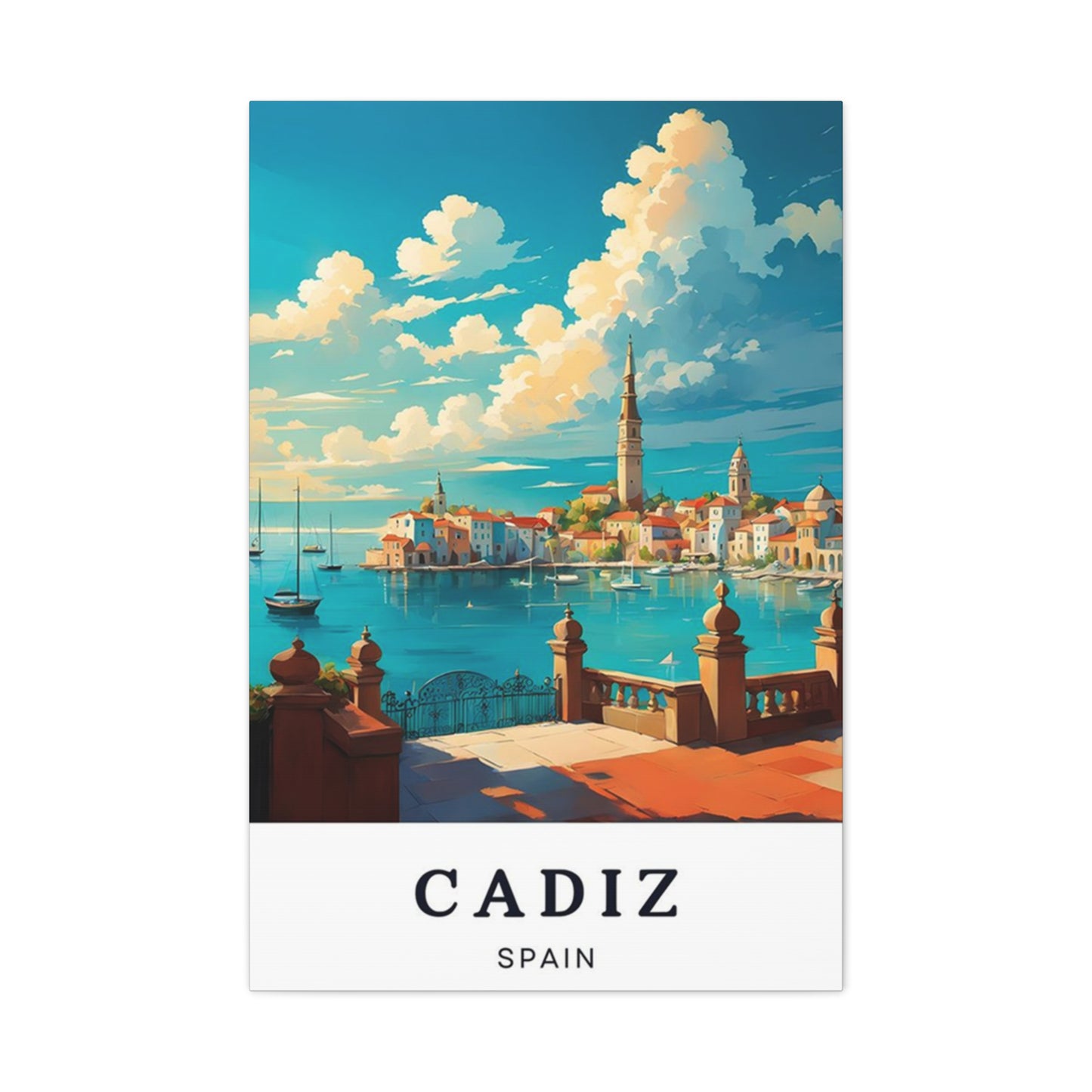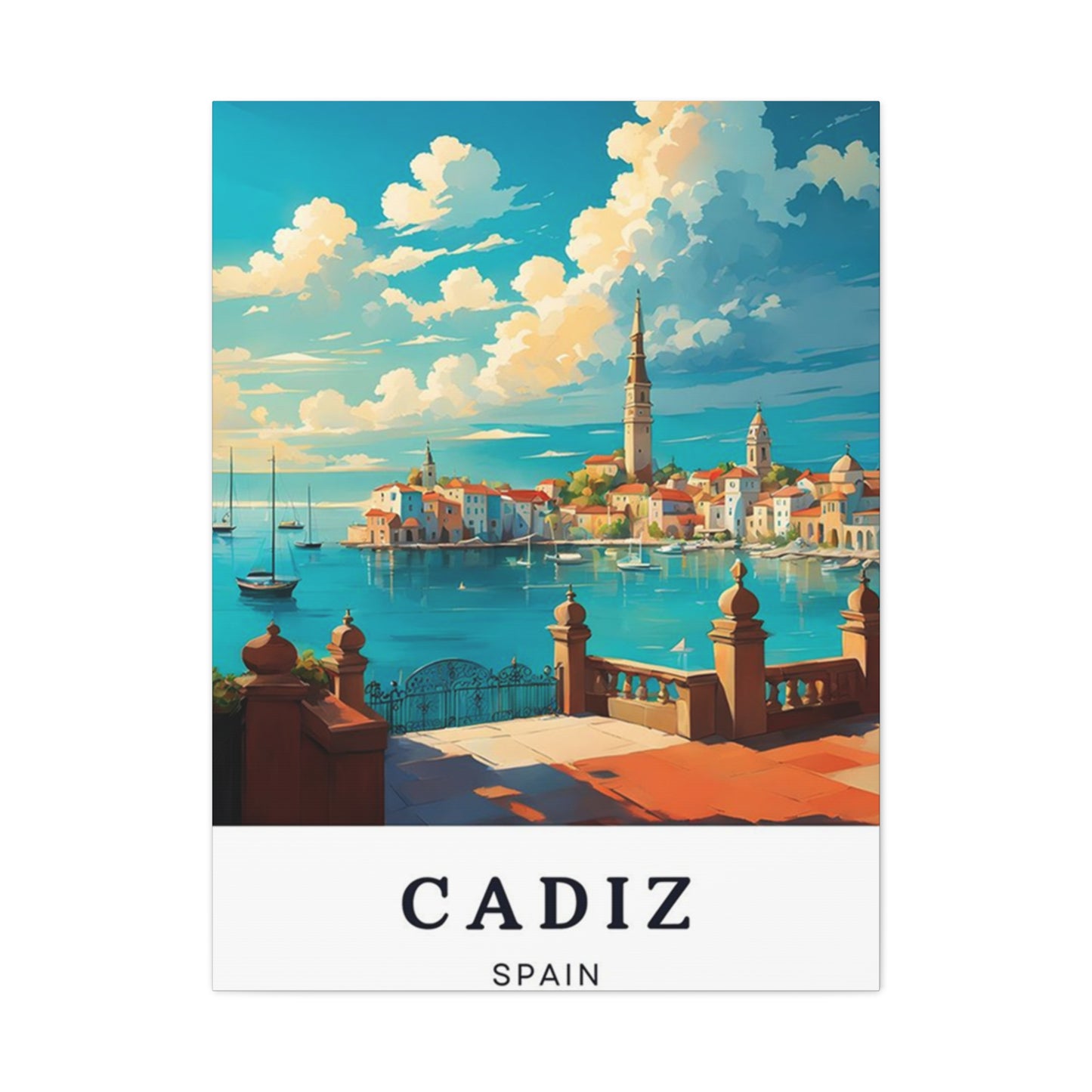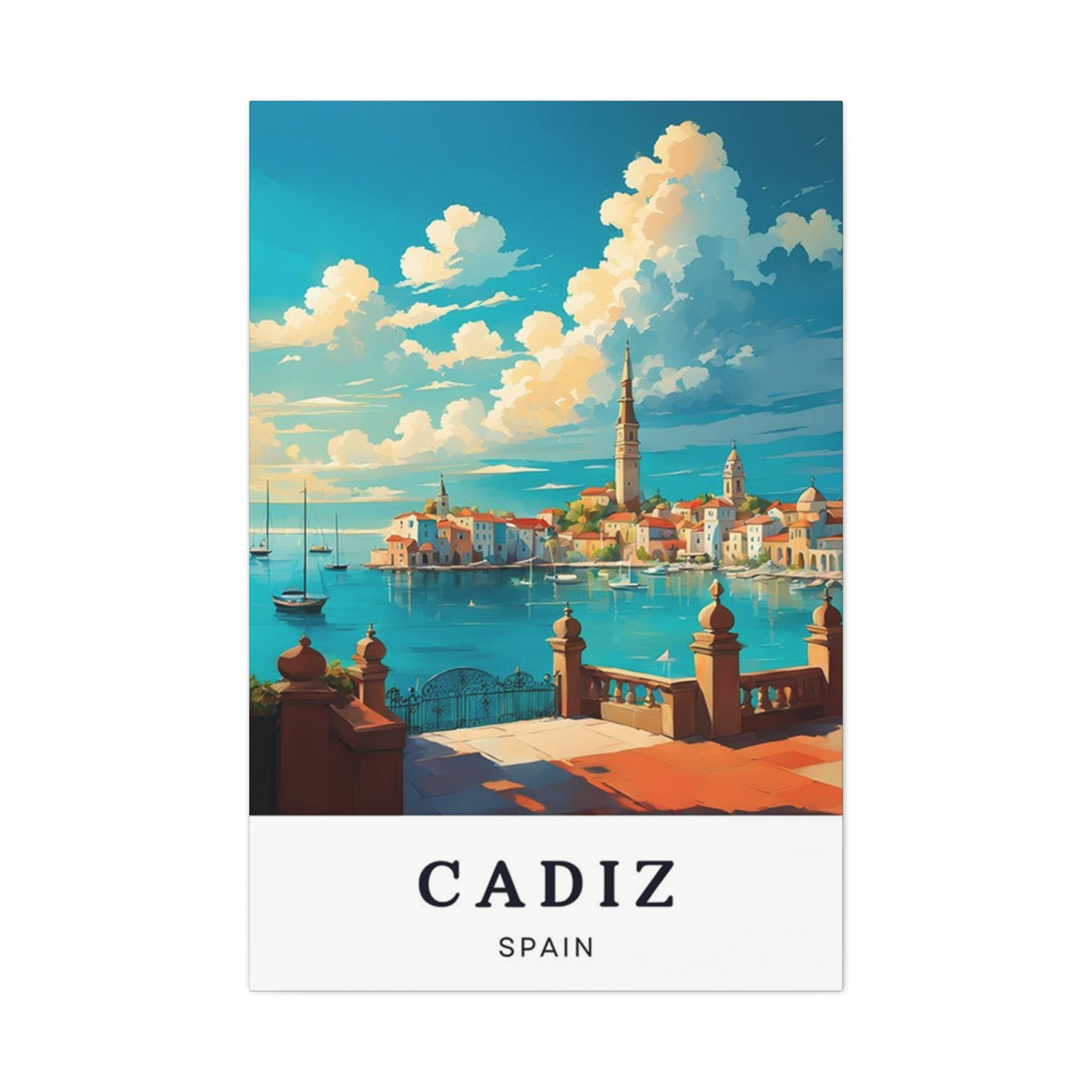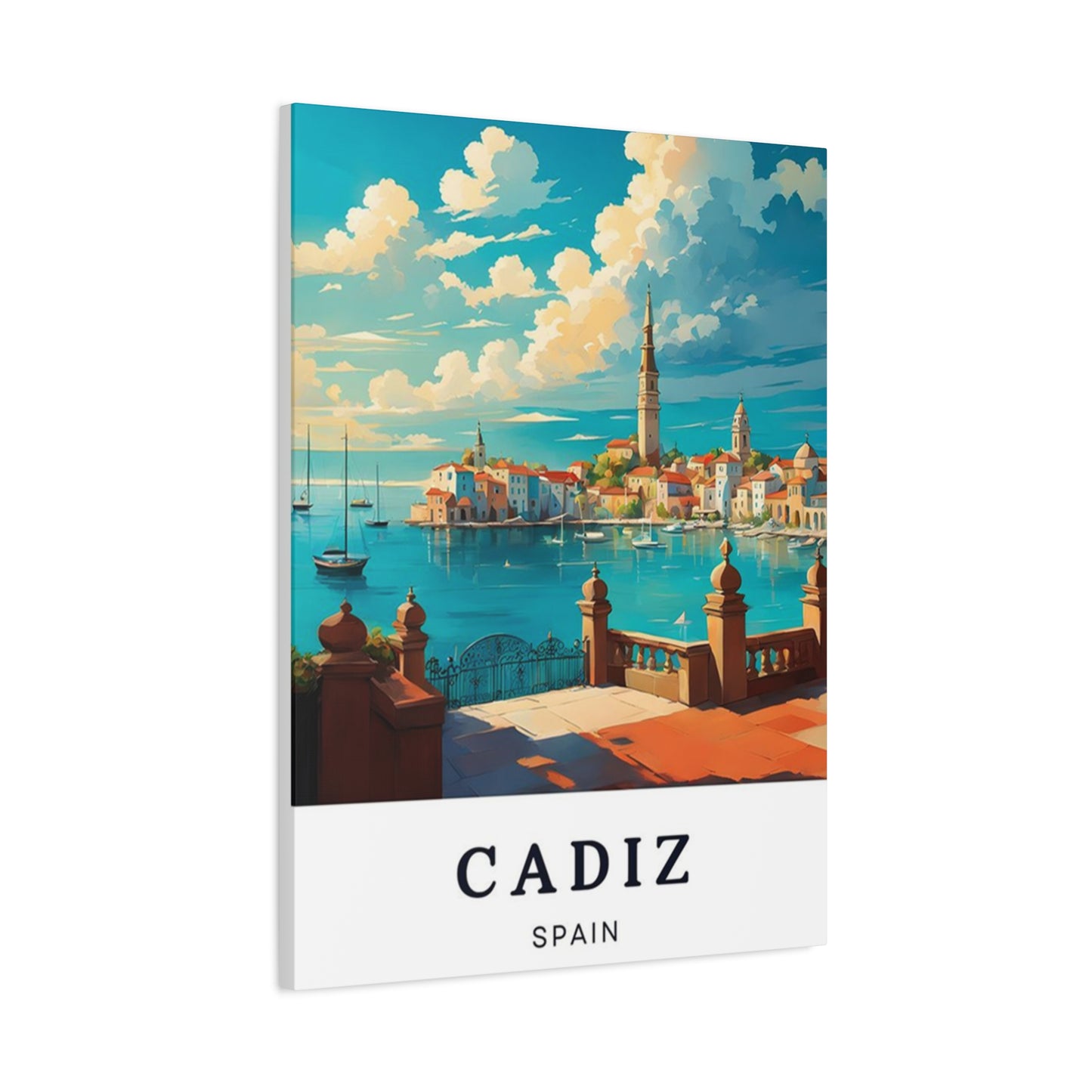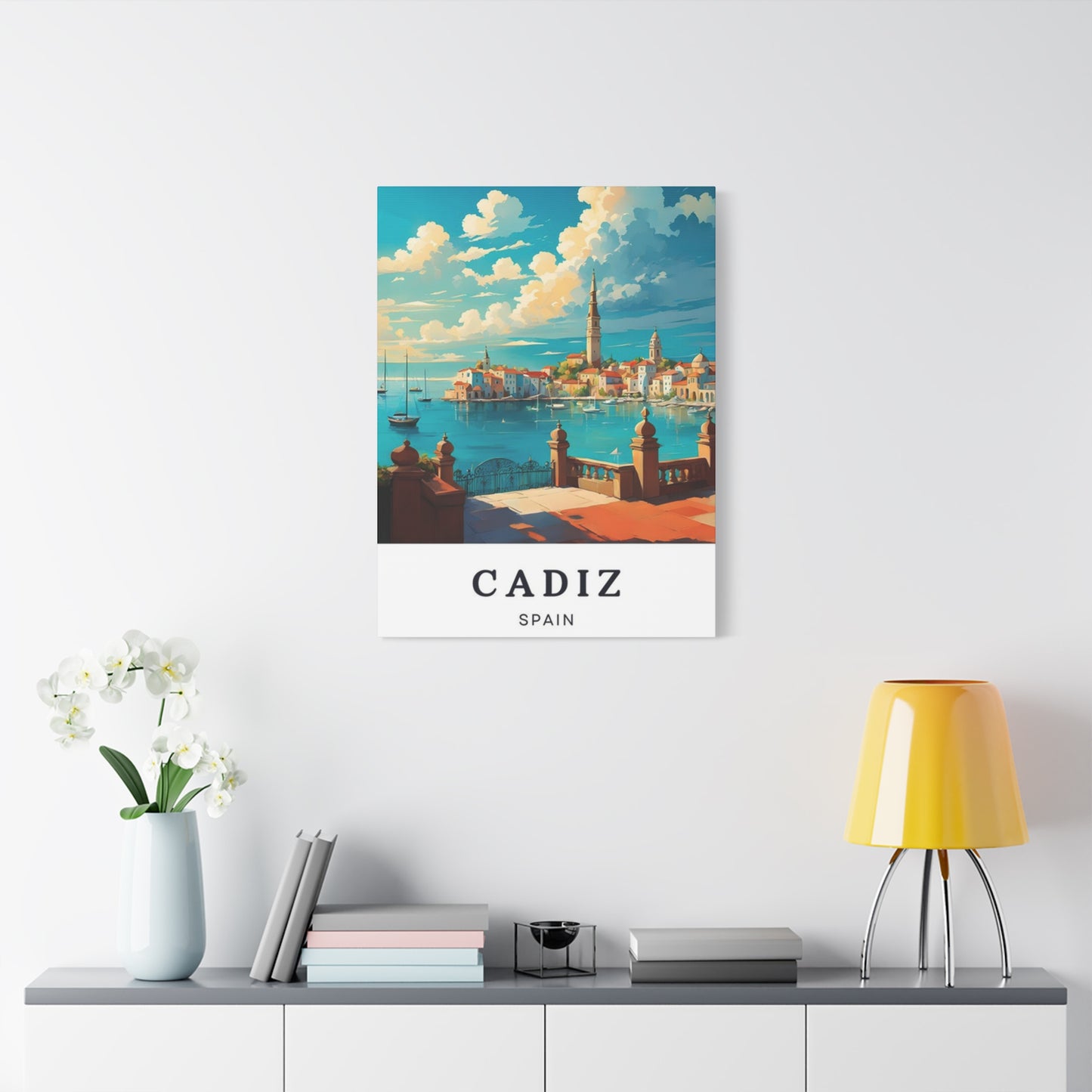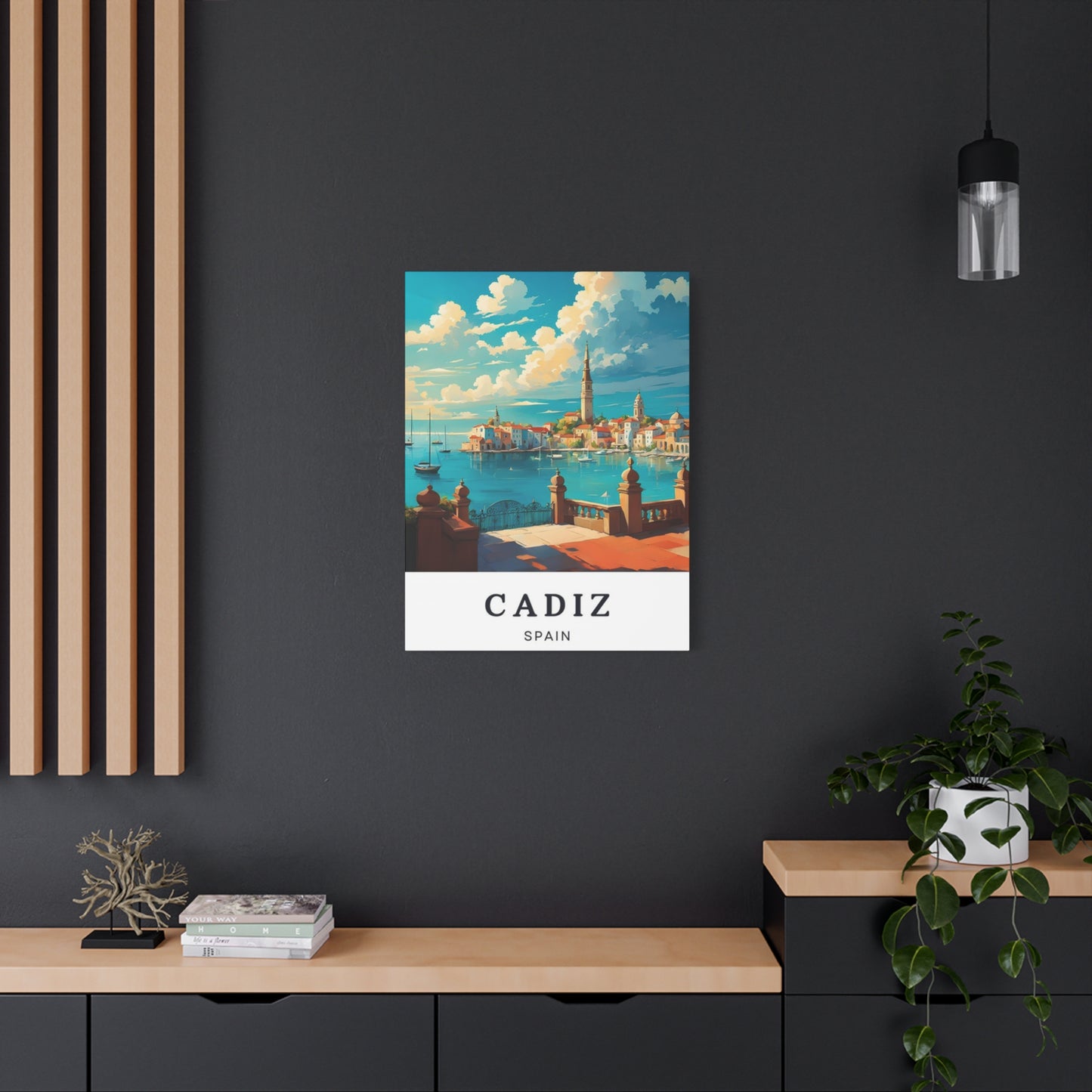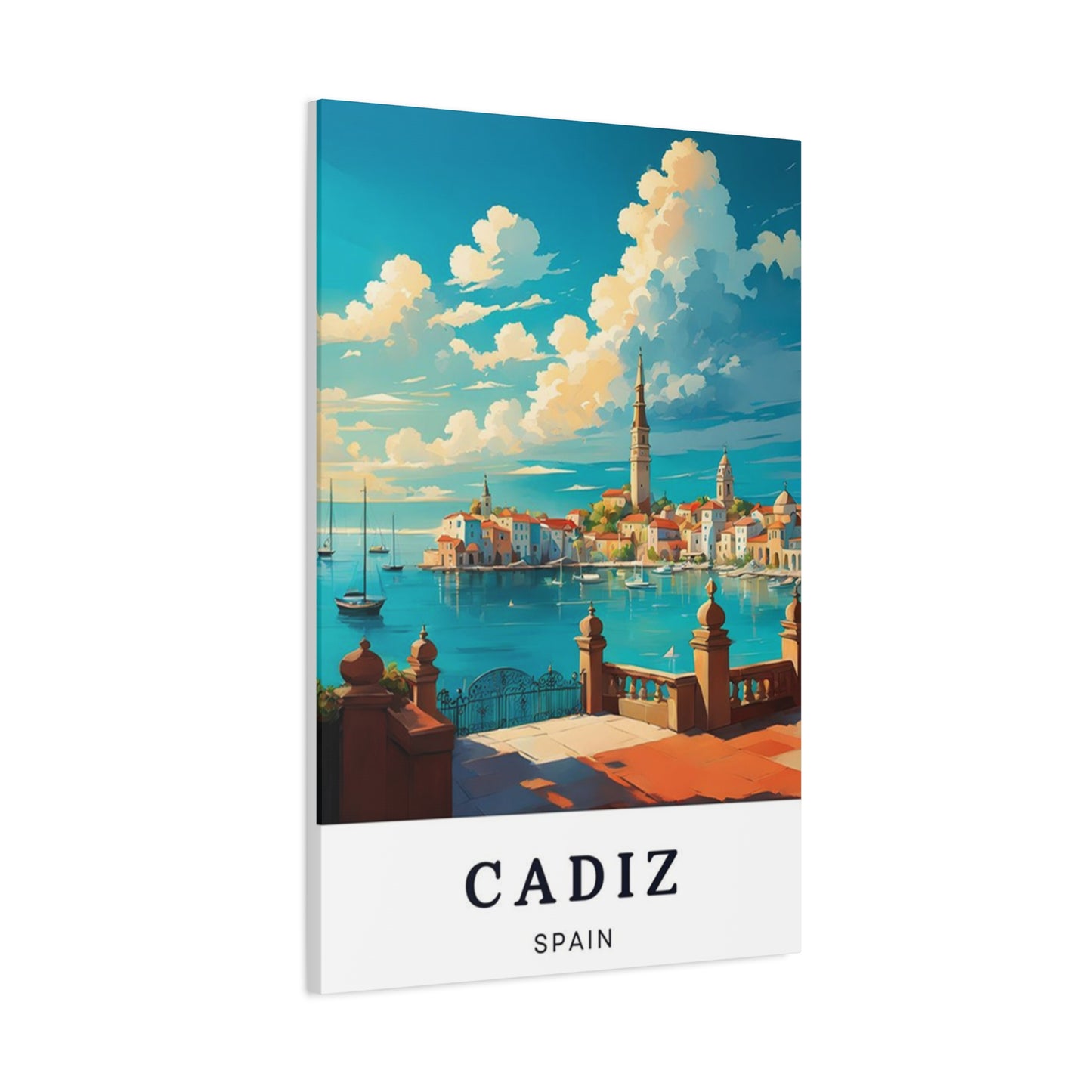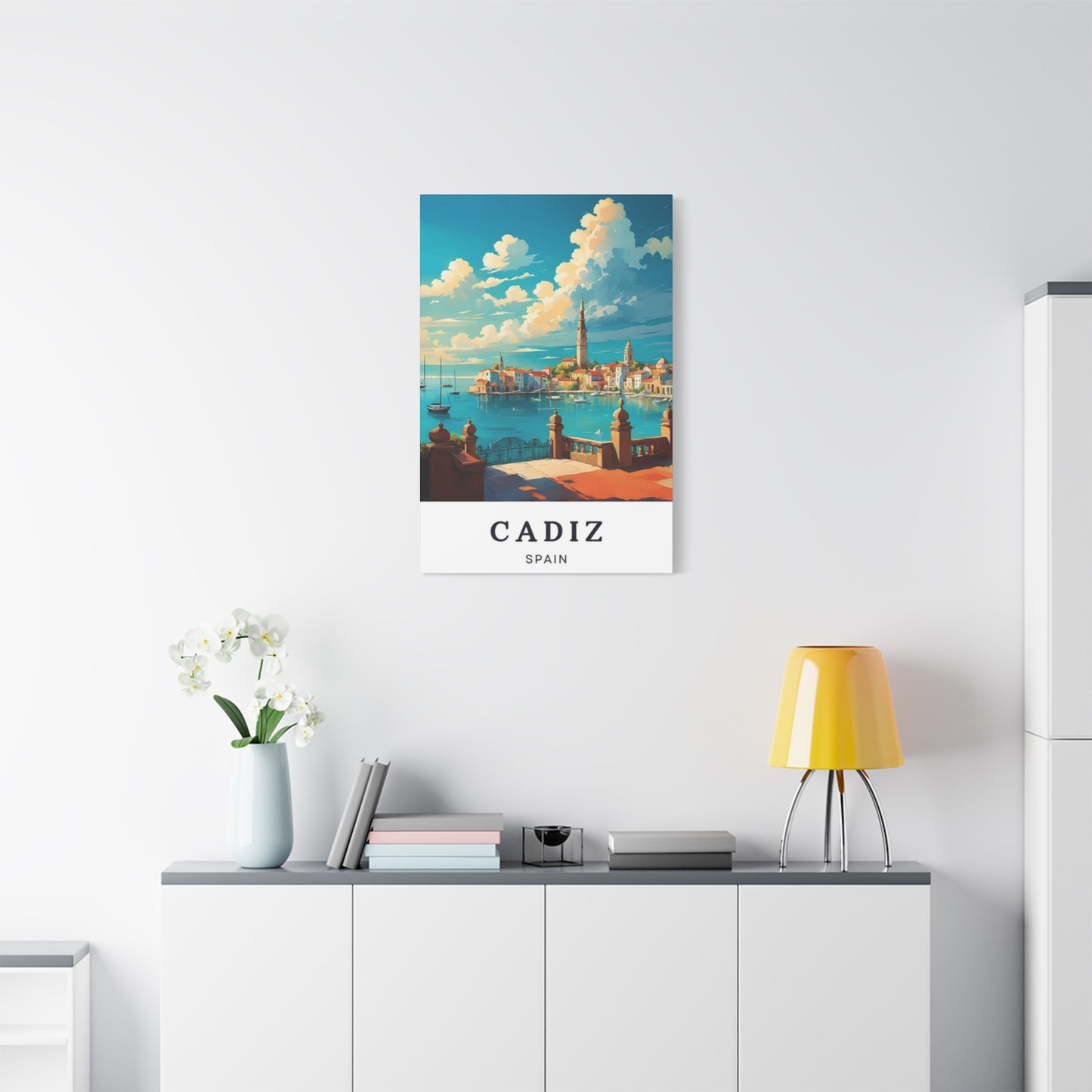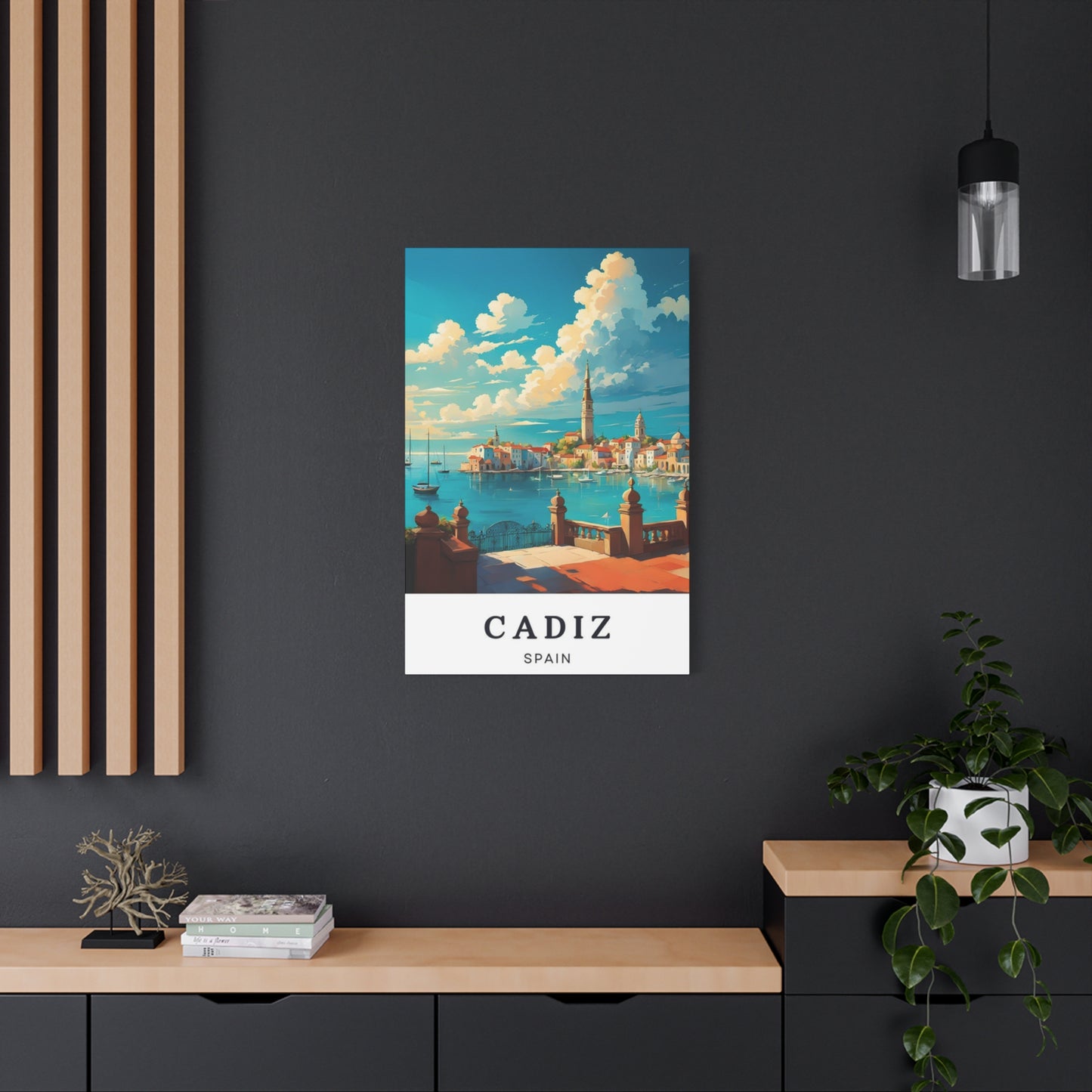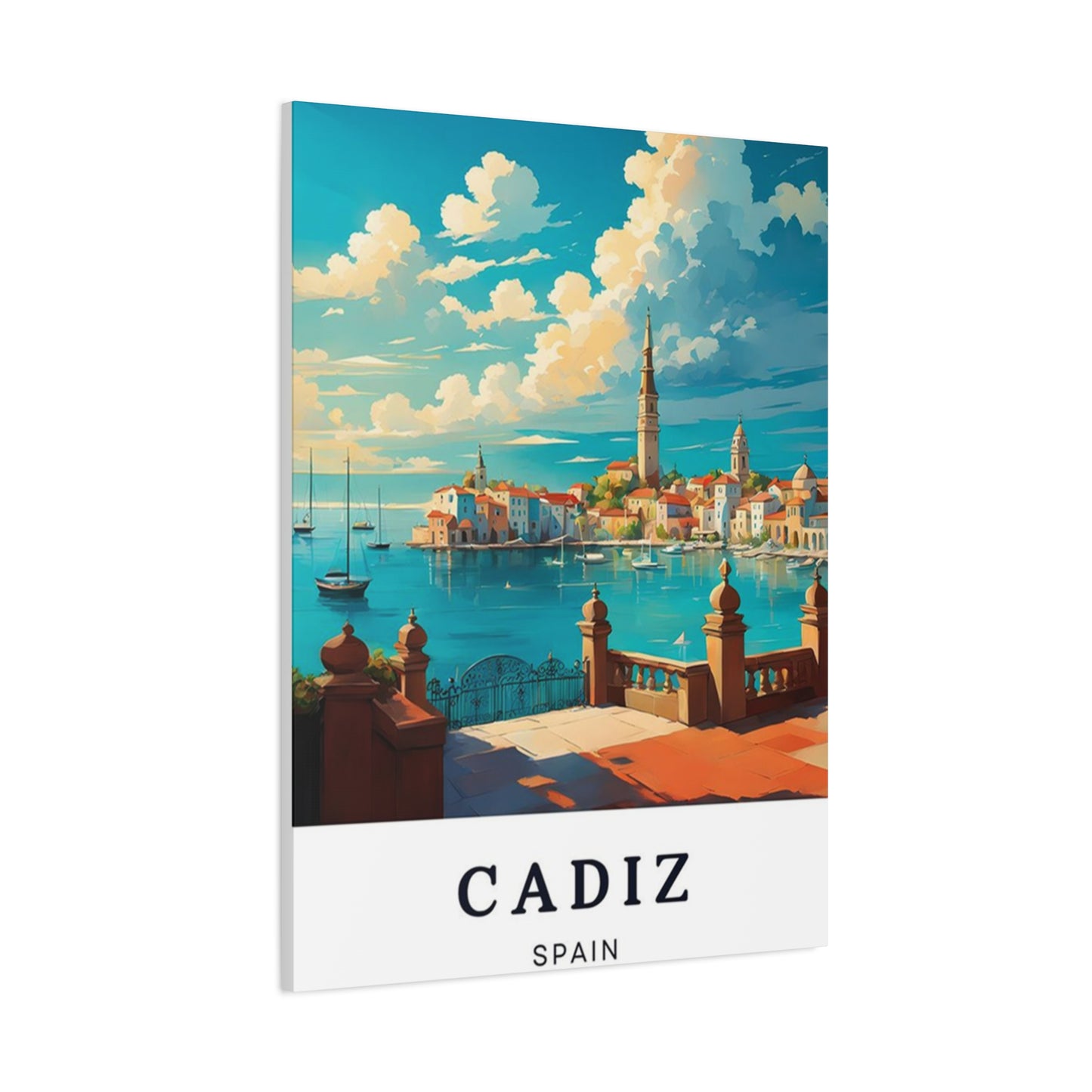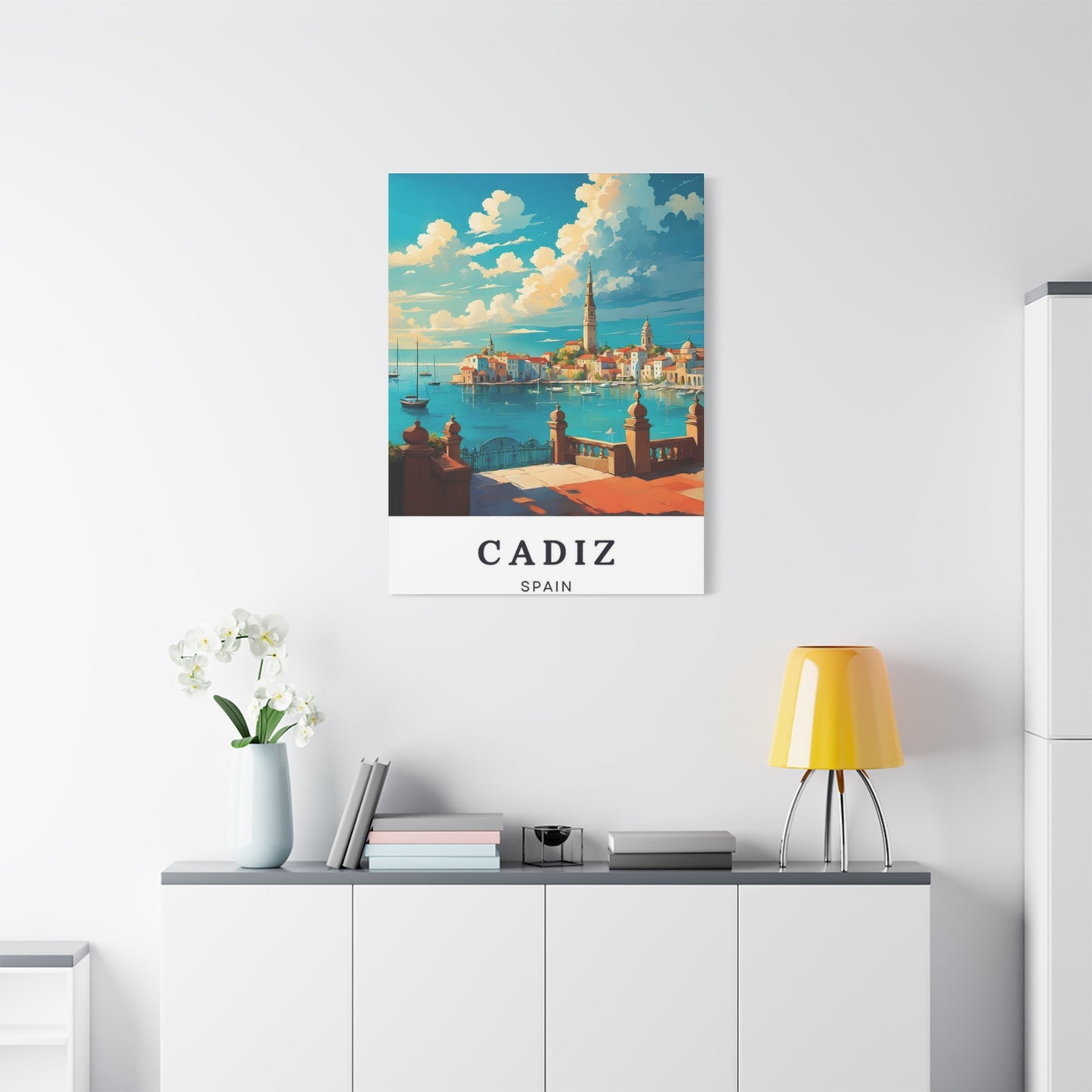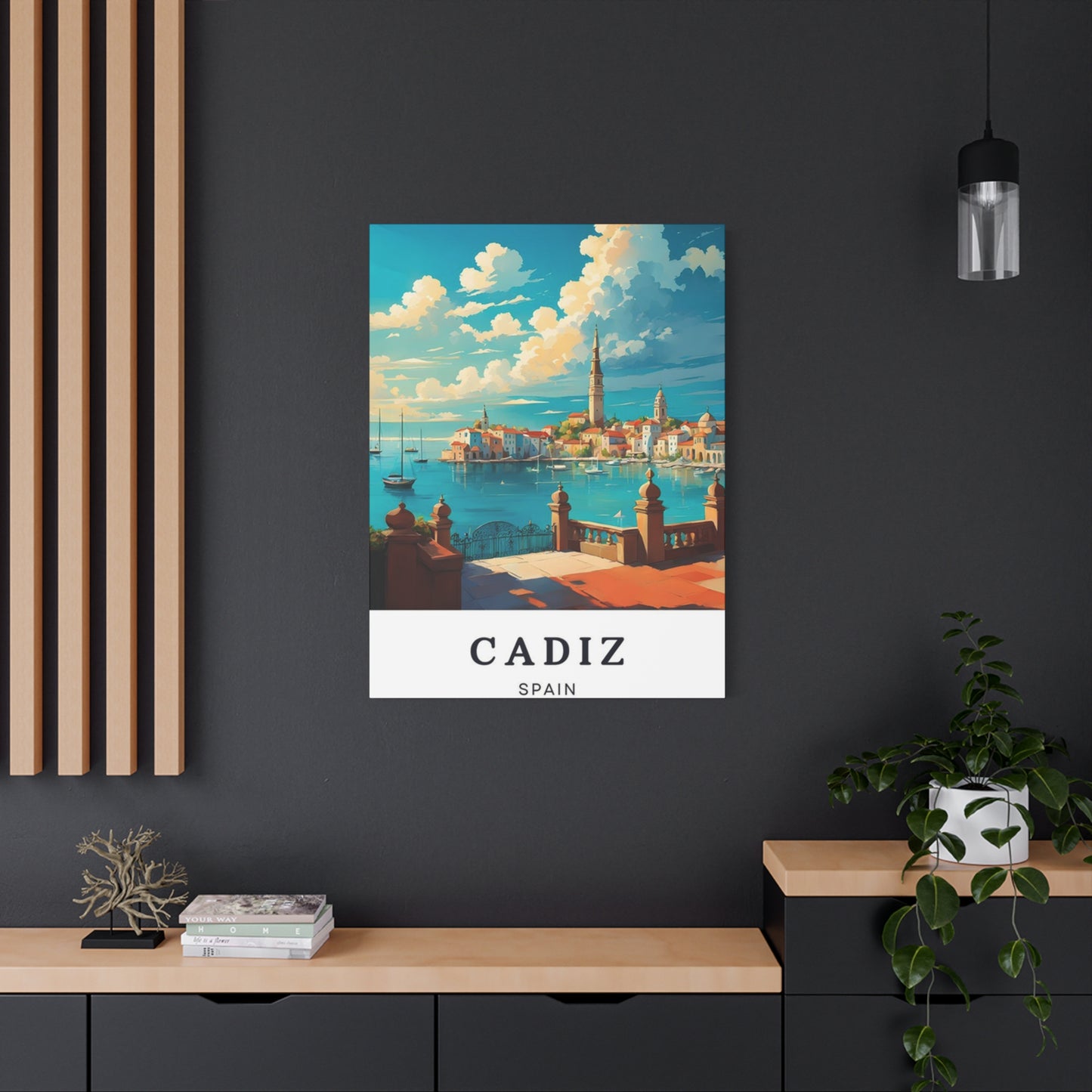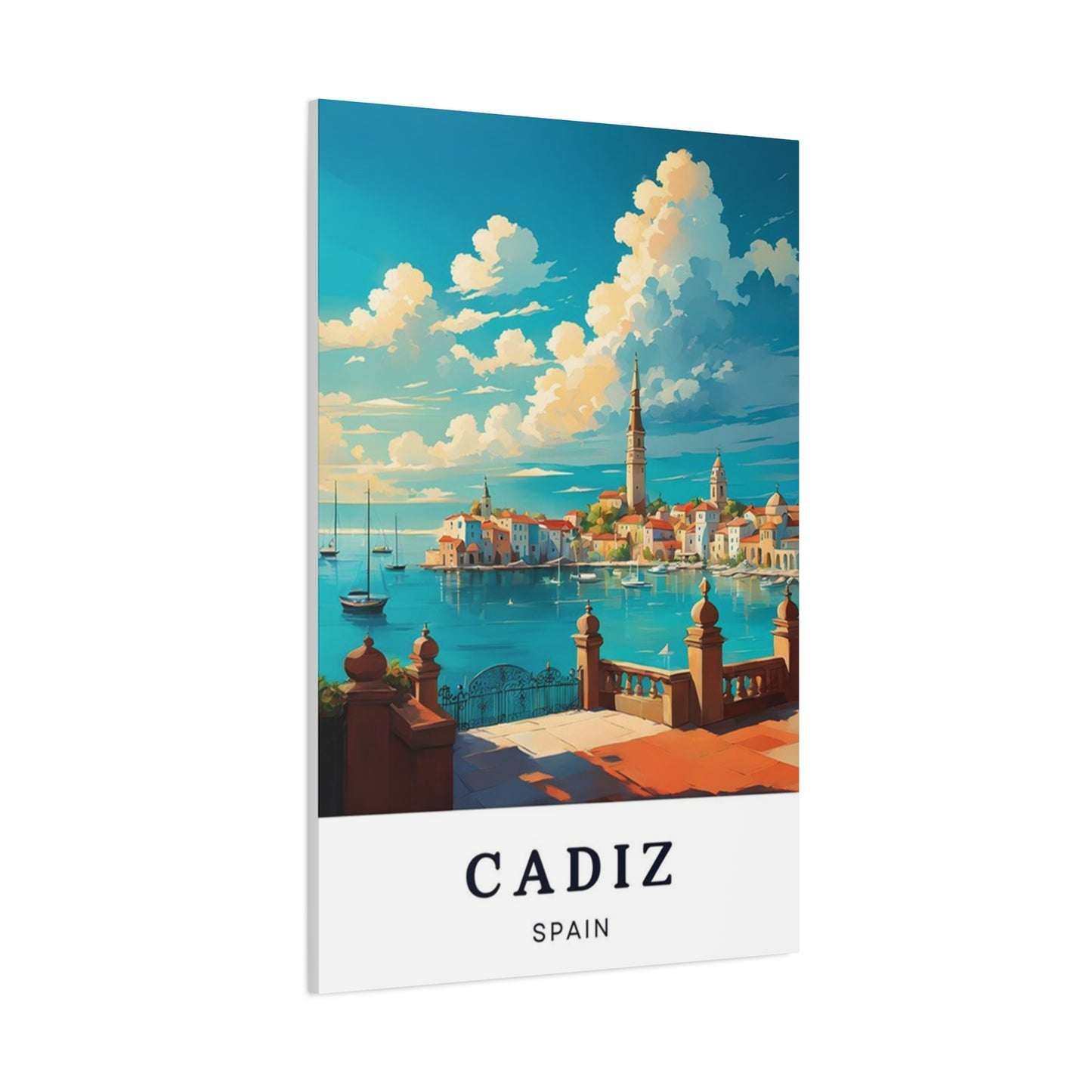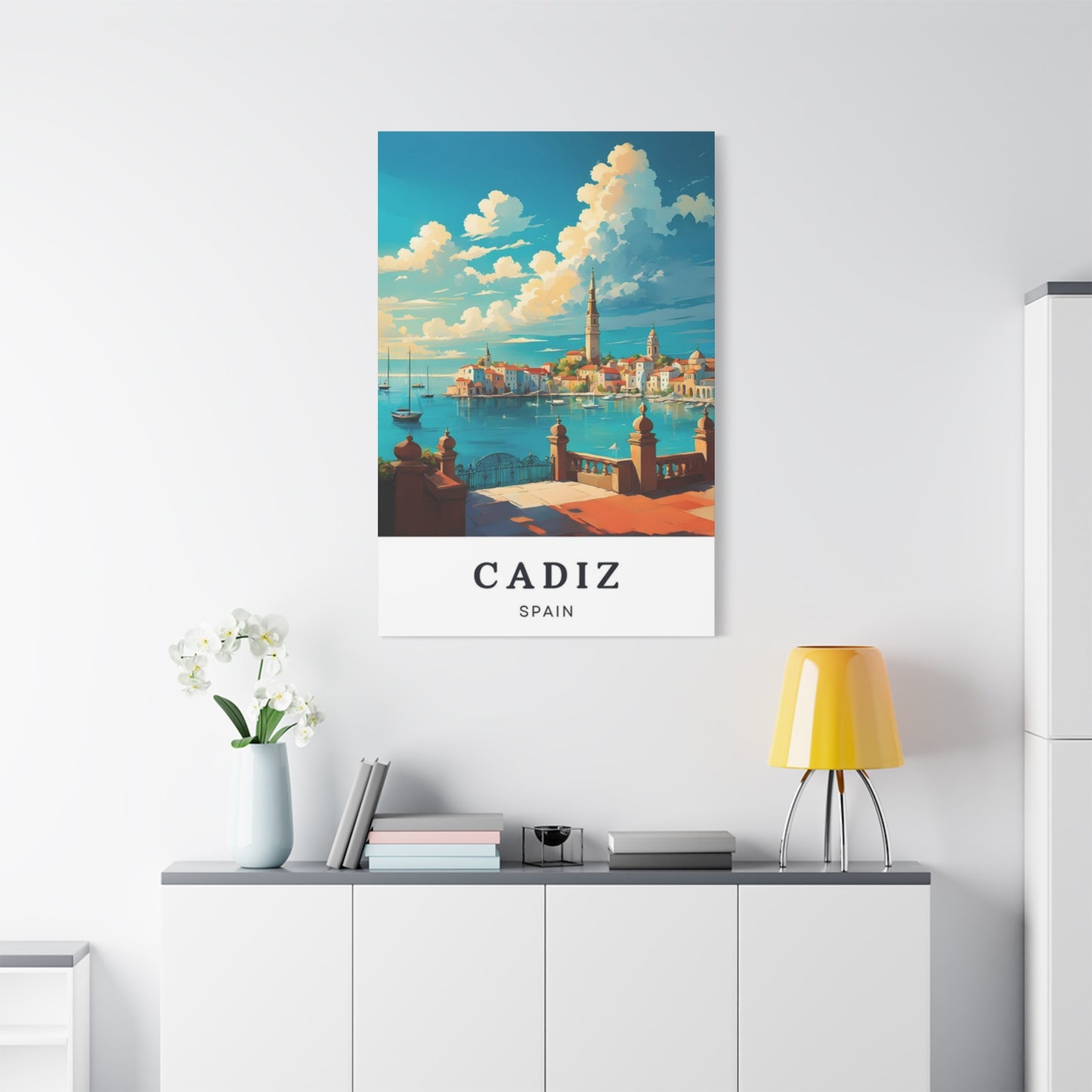Cadiz Wall Art: Discover the Artistic Soul of Spain's Ancient Coastal City
Nestled on Spain's southwestern coast, Cadiz stands as one of Europe's oldest continuously inhabited cities, where ancient Phoenician heritage meets contemporary artistic expression. This remarkable destination has become a canvas for creative minds, transforming ordinary walls into extraordinary galleries that tell stories of maritime adventures, cultural fusion, and timeless beauty. From weathered stone facades adorned with vibrant murals to modern interpretations of classical Mediterranean themes, Cadiz wall art represents a unique intersection of history, culture, and contemporary design that captivates visitors and inspires homeowners worldwide.
The artistic landscape of this coastal gem reflects thousands of years of cultural exchange, where Moorish influences blend seamlessly with Roman architectural elements, creating a distinctive visual language that speaks to both locals and international art enthusiasts. Street artists, local painters, and established galleries have collaborated to create an urban art movement that honors the city's rich maritime tradition while embracing modern artistic techniques and global design trends.
Whether you're seeking inspiration for your home decor, planning an art-focused visit to southern Spain, or simply curious about how ancient cities adapt their artistic traditions to contemporary life, the wall art scene in Cadiz offers endless possibilities for discovery and creative expression. This comprehensive exploration will guide you through the various facets of Cadiz's artistic heritage, from traditional techniques passed down through generations to cutting-edge street art that transforms neighborhoods into open-air museums.
Discovering the Rich Heritage of Cadiz Through Urban Art Expression
The streets of Cadiz serve as living museums where every corner reveals new artistic treasures that reflect the city's complex historical narrative. Ancient Phoenician traders established this coastal settlement over three millennia ago, creating the foundation for a cultural melting pot that continues to inspire artists today. The narrow alleyways and expansive plazas showcase works that range from traditional Andalusian themes to contemporary interpretations of global artistic movements.
Local historians and art critics note that Cadiz's unique position as a gateway between Europe and the Americas has created an artistic sensibility that embraces diversity while maintaining strong connections to regional traditions. The city's wall art incorporates elements from various periods, including Roman mosaics, Islamic geometric patterns, baroque religious imagery, and modern abstract compositions that reflect the cosmopolitan nature of this historic port city.
Walking through neighborhoods like La Viña, El Pópulo, and Santa María, visitors encounter murals that depict scenes from daily life in centuries past alongside contemporary works that address current social issues and cultural celebrations. These artistic expressions create a dialogue between past and present, allowing viewers to understand how Cadiz has evolved while preserving its essential character.
The maritime influence appears consistently throughout the city's wall art, with anchors, ships, waves, and sea creatures serving as recurring motifs that connect contemporary works to the city's seafaring heritage. Artists frequently incorporate traditional fishing nets, nautical ropes, and weathered wood textures into their compositions, creating pieces that feel authentically connected to the coastal environment.
Many murals feature portraits of historical figures who shaped Cadiz's development, including explorers, poets, flamenco dancers, and political leaders who contributed to the city's reputation as a center of progressive thought and cultural innovation. These biographical works often incorporate symbolic elements that reference specific events or achievements, creating educational opportunities for viewers while maintaining strong visual appeal.
The color palette used in Cadiz wall art typically reflects the natural environment, with ocean blues, sandy beiges, sunset oranges, and whitewashed building tones dominating many compositions. However, artists also experiment with bold contrasts and unexpected color combinations that create striking visual impact against the traditional architecture.
Community involvement plays a crucial role in the development of public art projects, with local residents often contributing ideas, stories, and even labor to large-scale mural installations. This collaborative approach ensures that the artwork resonates with the people who encounter it daily while creating opportunities for cultural exchange between artists and community members.
Educational institutions in Cadiz have embraced wall art as a teaching tool, commissioning works that illustrate historical events, scientific concepts, and literary themes in accessible visual formats. These educational murals serve multiple purposes, beautifying urban spaces while providing informal learning opportunities for residents and visitors of all ages.
The preservation of older wall art pieces requires ongoing attention from city officials, cultural organizations, and volunteer groups who work to maintain important works while making space for new artistic contributions. This balance between preservation and innovation reflects the broader challenge of maintaining historical authenticity while encouraging contemporary creative expression.
Capturing the Essence of Cadiz in Contemporary Wall Prints and Reproductions
The growing popularity of Cadiz-inspired wall prints has created new opportunities for artists to share their vision of this historic city with audiences far beyond Spain's borders. These reproductions range from faithful photographic representations of existing murals to original artistic interpretations that capture the spirit and atmosphere of Cadiz's unique cultural landscape.
Professional photographers specializing in urban art documentation have created extensive archives of Cadiz wall art, producing high-quality prints that preserve the detail and color accuracy of original works. These photographic prints allow collectors and art enthusiasts to bring authentic pieces of Cadiz's artistic heritage into their homes, offices, and creative spaces.
Digital printing technologies have enabled artists to create limited edition reproductions that maintain the texture and visual depth of original paintings while offering more affordable options for art collectors. Many local artists now offer their Cadiz-inspired works in multiple formats, including canvas prints, metal reproductions, and specialty papers that enhance specific aspects of their compositions.
The demand for Cadiz wall prints has encouraged local artists to develop new techniques specifically designed for reproduction, creating original works that translate effectively to print media while maintaining their emotional impact and visual appeal. This has led to innovations in color application, composition design, and artistic techniques that consider both the original viewing environment and the final display context.
Online galleries and art marketplaces have made Cadiz wall prints accessible to international buyers, creating economic opportunities for local artists while spreading awareness of the city's artistic heritage. Many platforms now feature curated collections that highlight different aspects of Cadiz's wall art scene, from historical themes to contemporary expressions.
The process of selecting and purchasing Cadiz wall prints involves considerations of size, color accuracy, printing materials, and framing options that affect both the visual impact and longevity of the artwork. Experienced collectors recommend viewing digital previews on various background colors and considering the lighting conditions of the intended display space.
Custom printing services have emerged to meet specific client requirements, offering options for color modification, size adjustment, and special finishing techniques that allow buyers to create unique versions of popular Cadiz wall art designs. These services often work directly with original artists to ensure quality and authenticity.
Art conservation specialists have developed guidelines for preserving Cadiz wall prints, addressing issues such as UV protection, humidity control, and appropriate display materials that prevent deterioration while maintaining color vibrancy. These preservation techniques help ensure that reproductions remain attractive and valuable over time.
The educational value of Cadiz wall prints extends beyond their aesthetic appeal, as many pieces include historical information, cultural context, and artist statements that enhance viewers' understanding of the city's heritage and contemporary artistic movements. This educational component makes these prints valuable resources for schools, libraries, and cultural institutions.
Collectors often focus on specific themes within Cadiz wall art, such as maritime subjects, architectural details, cultural celebrations, or particular artistic techniques. This specialization allows for the development of cohesive collections that tell comprehensive stories about different aspects of the city's artistic landscape.
Street Art Revolution: How Cadiz Inspires Modern Home Design Concepts
The influence of Cadiz street art on contemporary home design has created new aesthetic movements that blend Mediterranean warmth with urban artistic energy. Interior designers and homeowners worldwide have embraced elements inspired by Cadiz's wall art, incorporating bold colors, textural contrasts, and cultural symbolism into residential spaces that celebrate both comfort and creativity.
Modern homes inspired by Cadiz street art often feature accent walls that incorporate weathered textures, nautical motifs, and color palettes derived from the city's coastal environment. These design elements create focal points that add visual interest while maintaining connection to the natural world and maritime heritage that defines Cadiz's cultural identity.
The integration of Cadiz-inspired art into home decor extends beyond wall treatments to include furniture selections, textile choices, and decorative accessories that complement the artistic themes. Designers frequently recommend incorporating elements such as rope details, weathered wood finishes, and ceramic pieces that echo the materials and textures found in authentic Cadiz street art.
Color psychology plays an important role in adapting Cadiz wall art themes for residential use, as the bold hues and dramatic contrasts that work effectively in outdoor urban environments must be modified to create comfortable and livable interior spaces. Professional designers often recommend using the vibrant colors of Cadiz street art as accent elements rather than dominant features.
The cultural storytelling aspect of Cadiz wall art translates well to home environments, where families can create spaces that reflect their own histories, travels, and cultural connections. Many homeowners commission custom artwork that incorporates personal elements alongside traditional Cadiz motifs, creating unique pieces that honor both individual identity and cultural inspiration.
Lighting design becomes particularly important when incorporating Cadiz-inspired wall art into home environments, as the natural Mediterranean sunlight that illuminates outdoor murals must be recreated using artificial lighting systems. Designers often recommend combination lighting approaches that include both ambient and accent lighting to properly display artwork.
The DIY movement has embraced Cadiz street art aesthetics, with numerous tutorials and guides available for homeowners who want to create their own inspired pieces. These projects often focus on achievable techniques such as stenciling, color washing, and texture application that can be completed without professional artistic training.
Children's spaces particularly benefit from Cadiz-inspired design elements, as the playful colors, maritime themes, and cultural stories provide rich environments for imagination and learning. Many parents create educational opportunities by incorporating maps, historical information, and cultural artifacts alongside artistic elements inspired by Cadiz.
The sustainability movement has influenced how designers approach Cadiz-inspired home decor, with emphasis on using recycled materials, environmentally friendly paints, and locally sourced elements that reflect the environmental consciousness increasingly present in contemporary street art movements.
Seasonal decorating approaches allow homeowners to vary their Cadiz-inspired design elements throughout the year, incorporating different color schemes, textures, and cultural celebrations that reflect the dynamic nature of street art while maintaining cohesive design themes.
Essential Cadiz Cityscape Art Collections for Interior Wall Decoration
Creating compelling interior spaces with Cadiz cityscape art requires careful consideration of artistic themes, compositional elements, and display techniques that honor the original urban context while adapting to residential environments. Professional curators and interior designers have identified key categories of Cadiz cityscape art that work particularly well in home settings.
Architectural studies form one of the most popular categories of Cadiz cityscape art, featuring detailed depictions of the city's historic buildings, narrow streets, and distinctive rooflines that create the unique urban landscape. These works often emphasize the interplay between light and shadow, the texture of aged stone and weathered wood, and the geometric patterns created by traditional Andalusian architecture.
Harbor and maritime scenes represent another essential category, capturing the bustling activity of Cadiz's port, the graceful lines of fishing boats and sailing vessels, and the ever-changing relationship between the city and the sea. These pieces often incorporate movement and energy that brings dynamic visual interest to static wall displays.
Cultural celebration artwork depicts the festivals, traditions, and social gatherings that define community life in Cadiz, including flamenco performances, religious processions, and seasonal celebrations. These works typically feature rich colors, expressive figures, and symbolic elements that convey the joy and passion of Andalusian culture.
Street life documentation provides intimate glimpses into daily activities in Cadiz neighborhoods, showing residents engaged in work, leisure, and social interaction. These pieces often have documentary qualities that provide cultural education while maintaining strong aesthetic appeal through careful composition and color selection.
Landscape integration artwork shows how Cadiz's urban environment connects with the natural coastal landscape, featuring pieces that incorporate beaches, cliffs, vegetation, and weather patterns into cityscape compositions. These works help viewers understand the geographical context that influences the city's character and artistic traditions.
Historical narrative pieces combine architectural elements with storytelling components, depicting events, personalities, and cultural developments that shaped Cadiz's evolution. These works often include symbolic elements and cultural references that provide educational value alongside visual appeal.
Abstract interpretations of Cadiz cityscapes offer contemporary approaches to traditional themes, using color, form, and composition to capture emotional and atmospheric qualities rather than literal representation. These pieces work particularly well in modern interior design schemes that emphasize artistic expression over documentary accuracy.
The selection process for Cadiz cityscape art involves considerations of scale, color harmony, thematic consistency, and personal connection that ensure chosen pieces enhance rather than overwhelm residential spaces. Experts recommend viewing potential purchases in various lighting conditions and considering how they will interact with existing decor elements.
Installation techniques for cityscape art require attention to placement height, viewing angles, and surrounding space that allows viewers to appreciate the detail and complexity of urban scenes. Professional installation services often recommend specific spacing and grouping strategies for multiple pieces.
Maintenance and preservation of Cadiz cityscape art in home environments involves protection from direct sunlight, humidity control, and regular cleaning using appropriate techniques and materials. These preservation efforts help ensure that valuable artwork remains attractive and maintains its value over time.
Mediterranean Coastal Ambiance: Integrating Cadiz Aesthetic Elements
The Mediterranean coastal aesthetic embodied in Cadiz offers rich inspiration for creating interior environments that capture the relaxed sophistication and natural beauty of seaside living. This design approach emphasizes the connection between indoor and outdoor spaces while celebrating the cultural heritage and artistic traditions that make Cadiz unique among European coastal cities.
Natural light management plays a crucial role in achieving authentic Mediterranean ambiance, as the brilliant sunshine and dramatic shadows characteristic of Cadiz must be carefully balanced in residential settings. Designers often recommend window treatments, mirror placement, and artificial lighting systems that maximize natural illumination while preventing excessive heat and UV exposure.
Material selection for Mediterranean-inspired spaces typically includes natural elements such as stone, wood, ceramic, and textiles that echo the building materials and decorative traditions found throughout Cadiz. These materials should show appropriate aging and weathering that reflects the authentic character of coastal environments.
Color palettes derived from Cadiz's coastal setting include various shades of blue that reference the ocean and sky, warm earth tones that reflect the region's clay soils and stone buildings, and crisp whites that echo the traditional whitewashed walls found throughout Andalusia. These colors should be balanced to create spaces that feel both vibrant and restful.
Texture contrast becomes particularly important in Mediterranean-inspired design, as smooth surfaces must be balanced with rough textures, polished elements with weathered finishes, and soft fabrics with hard materials. This variety creates visual and tactile interest while reflecting the natural diversity of coastal environments.
Plant integration helps establish authentic Mediterranean atmosphere through the inclusion of species commonly found in Cadiz's climate, such as olive trees, lavender, rosemary, and other drought-resistant plants that thrive in sunny, warm conditions. Indoor gardening techniques allow these plants to flourish in residential environments.
Furniture selection should emphasize comfort and durability while maintaining connection to traditional Mediterranean craftsmanship. Pieces made from local wood species, featuring hand-carved details, and showing appropriate wear patterns help create authentic coastal ambiance.
Decorative accessories inspired by Cadiz's maritime heritage might include nautical instruments, fishing equipment, ceramic pottery, and textiles that reference traditional techniques and patterns. These elements should be displayed in ways that feel natural and lived-in rather than contrived or overly thematic.
Outdoor space integration extends Mediterranean coastal design beyond interior walls to include patios, balconies, and garden areas that create seamless transitions between indoor and outdoor living. This expansion helps achieve the indoor-outdoor lifestyle that defines Mediterranean coastal culture.
Seasonal adaptation allows Mediterranean-inspired spaces to respond to changing weather and light conditions while maintaining their essential character. This might involve adjusting textile colors, plant displays, and lighting approaches to reflect different times of year.
Historic Architecture and Landmarks Preserved Through Artistic Wall Expression
The preservation of Cadiz's architectural heritage through wall art creates valuable documentation while making historical information accessible to contemporary audiences. Artists working in this genre combine historical accuracy with creative interpretation to produce works that educate viewers while maintaining strong visual appeal and artistic merit.
Cathedral and religious architecture features prominently in Cadiz wall art, with detailed renderings of the city's baroque cathedral, historic churches, and religious monuments that have defined the cityscape for centuries. These works often emphasize the interplay of architectural elements, decorative details, and the spiritual significance of religious structures in community life.
Fortification and defensive structures represent another important category, depicting the walls, towers, and military installations that protected Cadiz throughout its history. Artists working with these themes often explore how defensive architecture shapes urban development while creating powerful visual compositions that emphasize strength and permanence.
Residential architecture artwork captures the distinctive character of Cadiz's neighborhoods, showing traditional building techniques, decorative elements, and the ways that homes adapt to coastal climate conditions. These works provide insights into daily life while celebrating the craftsmanship of local builders and artisans.
Commercial and public buildings receive artistic attention through works that document markets, government facilities, educational institutions, and other structures that serve community needs. These pieces often show how architectural styles have evolved while maintaining connection to regional traditions.
Bridge and infrastructure art highlights the engineering achievements that connect different parts of the city and facilitate transportation and commerce. These works often emphasize the relationship between human innovation and natural geography while creating dramatic compositional elements.
Archaeological site documentation through wall art helps preserve memory of ancient structures that may no longer exist in their original form. These interpretive works combine historical research with artistic vision to show how past civilizations shaped the current urban landscape.
Restoration project art documents ongoing efforts to preserve and rehabilitate historic structures, showing before and after conditions while highlighting the skills and dedication of preservation specialists. These works often serve advocacy functions by demonstrating the value of conservation efforts.
Architectural detail studies focus on specific elements such as doorways, windows, balconies, and decorative features that exemplify particular historical periods or construction techniques. These detailed works help viewers appreciate craftsmanship while providing educational information about building traditions.
Comparative architectural art shows how Cadiz's buildings relate to broader Mediterranean and Iberian architectural traditions while maintaining distinctive local characteristics. These works help viewers understand cultural connections while appreciating regional uniqueness.
The documentation process for architectural wall art often involves extensive research, historical consultation, and collaboration with preservation specialists to ensure accuracy while maintaining artistic freedom. This collaborative approach creates works that serve both aesthetic and educational purposes.
Authentic Sources and Locations for Acquiring Original Cadiz Wall Art
Discovering authentic Cadiz wall art requires knowledge of local artistic communities, gallery systems, and alternative venues where original works are created, displayed, and sold. The city's artistic ecosystem includes established galleries, independent studios, community art centers, and informal markets that offer different types of access to original artwork.
Traditional art galleries in Cadiz's historic center showcase works by established local artists alongside pieces by regional and national creators who draw inspiration from the city's heritage. These venues typically offer authenticated works, detailed provenance information, and professional presentation that appeals to serious collectors and art investors.
Independent artist studios provide opportunities to meet creators directly, observe their working processes, and commission custom pieces that incorporate specific themes or personal elements. Many Cadiz artists welcome studio visits by appointment, offering intimate experiences that enhance understanding of their creative approaches and cultural perspectives.
Community art centers and cultural institutions frequently host exhibitions, sales events, and artist demonstrations that provide access to emerging talents and experimental works that might not appear in commercial galleries. These venues often focus on community engagement and cultural education alongside art sales.
Outdoor art markets and festivals create temporary venues where multiple artists display and sell their works in informal settings that encourage browsing, comparison shopping, and direct interaction with creators. These events often feature competitive pricing and unique pieces that are not available through traditional channels.
University and educational institution galleries showcase works by student artists, faculty members, and visiting creators who contribute fresh perspectives on traditional themes. These venues often feature experimental techniques and innovative approaches to established subjects.
Online platforms and virtual galleries have expanded access to Cadiz wall art for international buyers, offering detailed photography, artist interviews, and secure purchasing systems that bridge geographical distances. However, buyers should verify authenticity and quality before making significant purchases.
Artist cooperatives and collective spaces provide alternative venues where multiple creators share resources, exhibition space, and marketing efforts. These collaboratives often feature diverse artistic styles and price points while maintaining focus on local themes and cultural authenticity.
Restoration workshops and conservation studios sometimes offer original works by artists who specialize in traditional techniques and historical accuracy. These pieces often represent significant investments in time and skill while providing exceptional educational and cultural value.
Private collectors occasionally offer pieces through informal networks, estate sales, or specialized auctions that provide access to rare or historically significant works. These opportunities require knowledge of local collecting communities and may involve negotiation and authentication processes.
The authentication process for original Cadiz wall art involves verification of artist identity, creation techniques, materials used, and provenance documentation that establishes ownership history and cultural significance. Professional appraisal services can provide objective assessments for valuable pieces.
Creative DIY Projects: Crafting Cadiz-Inspired Wall Art at Home
Creating original wall art inspired by Cadiz's artistic traditions offers opportunities for personal expression while developing new skills and connecting with Spanish coastal culture. DIY projects can range from simple decorative pieces to complex artistic works that require advanced techniques and significant time investment.
Stenciling techniques provide accessible entry points for beginners who want to incorporate Cadiz-inspired motifs into their homes without extensive artistic training. Popular stencil designs include nautical symbols, architectural elements, traditional patterns, and cultural symbols that can be applied to walls, furniture, and decorative accessories.
Color washing and texture application methods allow DIY artists to recreate the weathered, sun-bleached appearance characteristic of Cadiz's coastal environment. These techniques involve layering different paint colors and using various tools to create depth and visual interest that mimics natural aging processes.
Mosaic projects inspired by traditional Andalusian tilework offer opportunities to work with authentic materials and techniques while creating original compositions. These projects can incorporate ceramic tiles, glass pieces, stones, and other materials that reference historical decorative traditions.
Mixed media compositions combine painting, collage, found objects, and textural elements to create complex works that reflect the layered cultural history of Cadiz. These projects allow for experimentation with different materials while developing personal artistic vocabulary.
Photography integration projects combine original photography with painted or drawn elements to create unique works that document personal connections to Cadiz while adding creative interpretation. These hybrid approaches work particularly well for travel-inspired artwork.
Fabric and textile art inspired by traditional Spanish crafts can incorporate weaving, embroidery, applique, and other techniques that reference regional artistic traditions. These projects often result in functional artwork that can serve decorative and practical purposes.
Sculptural wall pieces using materials such as driftwood, rope, metal, and ceramic can create three-dimensional works that reference Cadiz's maritime heritage while adding textural interest to wall displays. These projects often require woodworking or metalworking skills.
Digital art projects allow creators to experiment with computer-based tools while developing skills in photo manipulation, digital painting, and graphic design. These techniques can produce original works suitable for printing and display or purely digital presentation.
Collaborative family projects provide opportunities for multiple participants to contribute different skills and perspectives while creating shared artwork that celebrates cultural connections and creative cooperation. These projects often result in meaningful pieces with personal significance.
The planning process for DIY Cadiz-inspired art projects involves research, material gathering, skill development, and workspace preparation that ensures successful completion while minimizing frustration and waste. Adequate preparation contributes significantly to project success and personal satisfaction.
Harmonious Interior Design: Blending Mediterranean Style with Cadiz Artistic Elements
Successfully integrating Cadiz-inspired art into Mediterranean interior design requires understanding how different artistic elements interact with architectural features, lighting conditions, and existing decor to create cohesive environments that feel authentic rather than contrived or overly themed.
Scale and proportion considerations play crucial roles in selecting artwork that complements rather than overwhelms Mediterranean interior spaces. Large-scale pieces work well in rooms with high ceilings and expansive wall areas, while smaller works may be more appropriate for intimate spaces or grouped arrangements.
Color coordination between Cadiz-inspired artwork and existing interior elements requires careful attention to undertones, intensity levels, and seasonal variations that affect how colors appear in different lighting conditions. Professional designers often recommend testing color combinations in various parts of rooms before making final decisions.
Furniture placement strategies can enhance the impact of Cadiz-inspired wall art by creating appropriate viewing distances, complementary backgrounds, and functional arrangements that support both aesthetic goals and practical needs. Furniture should complement rather than compete with artwork for visual attention.
Lighting design specifically for artwork display involves both natural and artificial illumination that highlights artistic details while preventing damage from excessive exposure. Track lighting, picture lights, and ambient lighting systems can all contribute to effective art display.
Textile coordination with wall art requires selecting fabrics, patterns, and textures that support artistic themes without creating visual confusion or overwhelming complexity. Mediterranean textiles often feature natural fibers, muted patterns, and earth-tone color palettes that complement Cadiz-inspired artwork.
Architectural feature enhancement through strategic art placement can emphasize positive aspects of interior spaces while minimizing less attractive elements. Art can draw attention to beautiful archways, windows, or ceiling details while disguising problem areas.
Seasonal decoration approaches allow Mediterranean interiors to reflect changing conditions while maintaining consistent artistic themes. This might involve rotating different pieces, adjusting accessories, or modifying lighting to create fresh presentations throughout the year.
Cultural authenticity in design choices involves selecting elements that reflect genuine understanding of Mediterranean lifestyle rather than superficial tourist impressions. This depth of cultural appreciation creates more meaningful and satisfying interior environments.
Maintenance and preservation considerations for Mediterranean interiors with Cadiz-inspired art include protecting pieces from humidity, salt air exposure in coastal locations, and cleaning requirements that maintain both artwork and surrounding design elements.
Local Artistic Community: Talented Creators Behind Cadiz's Stunning City Art
The vibrant artistic community in Cadiz includes diverse creators whose backgrounds, training, and creative approaches contribute to the city's reputation as a center of contemporary art and cultural expression. These artists work in various media and styles while maintaining connections to local traditions and global artistic movements.
Established master artists who have spent decades developing their craft often serve as mentors and cultural ambassadors, sharing traditional techniques while encouraging innovation and experimentation among younger creators. Their studios and workshops provide learning opportunities while producing works that command respect in national and international art circles.
Emerging contemporary artists bring fresh perspectives and new techniques to traditional themes, often combining digital media, unconventional materials, and global influences with local cultural content. These creators frequently challenge established approaches while maintaining respectful connections to regional heritage.
Street art specialists focus specifically on public art, mural creation, and community engagement projects that transform urban spaces into accessible galleries. These artists often collaborate with city officials, business owners, and neighborhood groups to create works that serve both aesthetic and social functions.
Academic artists affiliated with educational institutions contribute scholarly perspectives and research-based approaches to local art scenes while training new generations of creators. Their work often explores historical themes, cultural analysis, and experimental techniques that advance artistic knowledge.
Collaborative artist groups and cooperatives provide mutual support, shared resources, and collective exhibition opportunities that strengthen the local art community while creating new possibilities for individual expression. These organizations often focus on specific themes, techniques, or social issues.
International artists who have chosen to work in Cadiz bring outside perspectives and global connections that enrich local artistic dialog while contributing to the city's reputation as an attractive destination for creative professionals. Their presence often facilitates cultural exchange and artistic innovation.
Community-based artists work directly with neighborhood groups, schools, and social organizations to create participatory art projects that engage residents as both subjects and creators. These collaborative approaches often produce works that reflect authentic community values and experiences.
Specialized technique practitioners focus on specific artistic methods such as ceramics, textiles, metalwork, or traditional painting styles that require extensive training and cultural knowledge. Their expertise helps preserve traditional crafts while adapting them to contemporary contexts.
Arts education advocates work to expand access to artistic training, materials, and exhibition opportunities while promoting public appreciation for visual arts. Their efforts often involve organizing workshops, lectures, and community events that build artistic literacy and cultural engagement.
The economic impact of local artists extends beyond art sales to include tourism attraction, cultural education, property value enhancement, and job creation that benefits the broader community. This economic contribution helps justify public support for arts programs and infrastructure development.
Economic and Cultural Impact of Wall Art Tourism in Historic Cadiz
The growing popularity of art-focused tourism has created significant economic opportunities for Cadiz while raising important questions about cultural preservation, community impact, and sustainable development. The city's response to increased artistic tourism involves balancing economic benefits with protection of local character and resident quality of life.
Tourism revenue generated by art-focused visitors includes expenditures on accommodations, dining, transportation, guided tours, art purchases, and related services that create employment opportunities for local residents. Economic studies suggest that cultural tourism often produces higher per-visitor spending than general leisure travel.
Employment creation in art-related tourism includes tour guides, gallery staff, workshop instructors, art handlers, security personnel, and numerous indirect positions in hospitality and service sectors. These jobs often provide opportunities for residents with artistic backgrounds or cultural knowledge to develop professional careers.
Property value effects of increased artistic tourism can benefit property owners while potentially displacing long-term residents through gentrification processes. City planners and community organizations work to balance development benefits with affordable housing preservation and community stability.
Cultural preservation challenges arise when increased tourism pressure threatens the authenticity and accessibility of local artistic traditions. Successful management requires ongoing dialog between artists, residents, tourism officials, and cultural preservation specialists.
Infrastructure development needs for art tourism include improved pedestrian access, interpretive signage, public restroom facilities, parking availability, and safety measures that enhance visitor experiences while serving resident needs. These improvements often require significant public investment.
Community engagement strategies help ensure that tourism development benefits local residents while preserving the cultural authenticity that attracts visitors. Successful approaches often involve resident participation in planning processes and tourism-related employment opportunities.
Educational program development creates opportunities for visitors to gain deeper understanding of local culture while providing income for local artists and cultural experts. These programs often include workshops, lectures, guided tours, and hands-on creative experiences.
Marketing and promotion efforts must balance tourism attraction with capacity management to prevent overcrowding that degrades both visitor experiences and local quality of life. Sustainable tourism approaches often emphasize quality over quantity in visitor management.
International recognition of Cadiz's artistic heritage through tourism awards, cultural designations, and media coverage enhances the city's reputation while creating additional economic opportunities. However, this recognition also increases pressure for continued development and cultural preservation.
Long-term sustainability planning for art tourism requires consideration of environmental impacts, cultural integrity, economic distribution, and community needs that ensure tourism benefits support rather than undermine local quality of life. This planning often involves multiple stakeholders and ongoing evaluation processes.
Conservation Challenges and Digital Preservation of Cadiz Street Art
The ephemeral nature of street art creates unique challenges for documentation, preservation, and cultural heritage protection that require innovative approaches combining traditional conservation techniques with digital technologies. Cadiz's growing recognition of street art as valuable cultural expression has prompted development of comprehensive preservation strategies.
Physical deterioration of outdoor artwork occurs through weather exposure, pollution, vandalism, and normal aging processes that affect both artistic integrity and public safety. Conservation specialists must develop techniques appropriate for different materials, environmental conditions, and artistic intentions while respecting the temporary nature that defines much street art.
Documentation methodologies for street art preservation include high-resolution photography, 3D scanning, material analysis, and detailed condition reports that capture artwork characteristics before deterioration occurs. These records serve both preservation and research purposes while creating archives for future study.
Legal and ethical considerations in street art preservation involve questions of intellectual property, artist consent, public space management, and cultural ownership that require careful navigation of competing interests and legal frameworks. These issues often involve complex negotiations between artists, property owners, and public officials.
Digital archive development creates permanent records of temporary artwork while providing access for researchers, educators, and cultural enthusiasts worldwide. These archives often include contextual information, artist interviews, historical background, and technical analysis that enhance understanding beyond visual documentation.
Community participation in preservation efforts helps ensure that conservation priorities reflect local values while building public support for cultural heritage protection. Volunteer programs, educational initiatives, and fundraising campaigns often provide essential resources for preservation projects.
Technology integration in conservation work includes advanced imaging techniques, environmental monitoring systems, protective coating applications, and digital restoration methods that extend artwork lifespan while maintaining artistic integrity. These technologies often require specialized training and equipment.
Funding mechanisms for street art conservation include public grants, private donations, corporate sponsorships, and tourism revenue that provide resources for preservation activities. Successful funding strategies often combine multiple sources while demonstrating public benefit and cultural value.
Educational outreach programs help build public appreciation for street art conservation while training new professionals in specialized techniques and ethical approaches. These programs often involve partnerships between educational institutions, cultural organizations, and conservation professionals.
International collaboration in street art preservation includes sharing techniques, research findings, and best practices among cities and organizations worldwide. These collaborative efforts help advance preservation science while building networks of professional expertise.
Policy development for street art preservation requires balancing conservation goals with urban planning needs, property rights, and public access considerations. Effective policies often involve stakeholder consultation and flexible approaches that adapt to changing circumstances and priorities.
Evolution of Cadiz Urban Art Movements
The trajectory of artistic development in Cadiz reflects broader trends in contemporary art while maintaining distinctive local characteristics that ensure continued cultural relevance and creative innovation. Understanding these emerging trends helps predict future directions while identifying opportunities for artistic growth and community engagement.
Technology integration in public art creation includes digital projection systems, interactive installations, augmented reality components, and sensor-responsive elements that create dynamic experiences for viewers. These technological approaches often appeal to younger audiences while expanding artistic possibilities.
Environmental sustainability concerns increasingly influence artistic practices through use of eco-friendly materials, solar-powered installations, water conservation techniques, and themes that address climate change and environmental protection. These approaches often reflect broader community values and global awareness.
Social media influence on public art includes creation of "Instagram-worthy" installations, hashtag campaigns, virtual gallery experiences, and online community building that extends artistic impact beyond physical locations. Artists must now consider digital presentation alongside traditional viewing experiences.
Cross-cultural collaboration brings international perspectives to local art scenes while sharing Cadiz's artistic heritage with global audiences. These collaborations often involve artist residencies, cultural exchange programs, and joint exhibitions that create new creative possibilities.
Participatory art approaches engage community members as collaborators rather than passive observers, creating works that reflect collective creativity while building social connections. These projects often address local issues while celebrating community identity and shared values.
Commercial integration of public art includes partnerships with businesses, sponsored installations, and marketing campaigns that provide funding while raising questions about artistic independence and commercialization effects. Successful approaches often maintain artistic integrity while achieving financial sustainability.
Educational curriculum development incorporates street art and public art into academic programs, creating new career paths while building cultural literacy among students. These educational initiatives often involve partnerships between schools, artists, and cultural organizations.
Policy evolution in public art management includes new regulations, funding mechanisms, and administrative procedures that adapt to changing artistic practices and community needs. Effective policies often balance creative freedom with public interest considerations.
Cultural tourism expansion creates opportunities for artistic development while potentially threatening authenticity and community character. Sustainable approaches often emphasize quality experiences and community benefit over visitor volume maximization.
Climate adaptation in public art planning addresses changing weather patterns, sea level rise, and extreme weather events that affect both artwork preservation and public safety. These considerations increasingly influence material selection, installation techniques, and maintenance strategies.
Conclusion
The artistic landscape of Cadiz represents a remarkable synthesis of ancient cultural heritage and contemporary creative expression that continues to evolve while maintaining deep connections to the city's maritime identity and Andalusian traditions. Through centuries of cultural exchange, artistic innovation, and community collaboration, this historic coastal city has developed a unique visual language that speaks to both local residents and international visitors, creating bridges between past and present, tradition and innovation.
The wall art movement in Cadiz demonstrates how public artistic expression can serve multiple functions simultaneously, beautifying urban environments while preserving cultural memory, providing economic opportunities, and fostering community engagement. From ancient Phoenician influences to contemporary street art installations, the city's artistic evolution reflects broader patterns of cultural development while maintaining distinctively local characteristics that resist homogenization and commercial exploitation.
The growing international recognition of Cadiz's artistic heritage creates both opportunities and challenges for local communities, artists, and cultural institutions. Economic benefits from cultural tourism must be balanced with preservation of authentic community character and accessible artistic expression that serves residents' needs alongside visitor interests. This balance requires ongoing dialog between stakeholders and adaptive management strategies that respond to changing conditions while maintaining core cultural values.

















